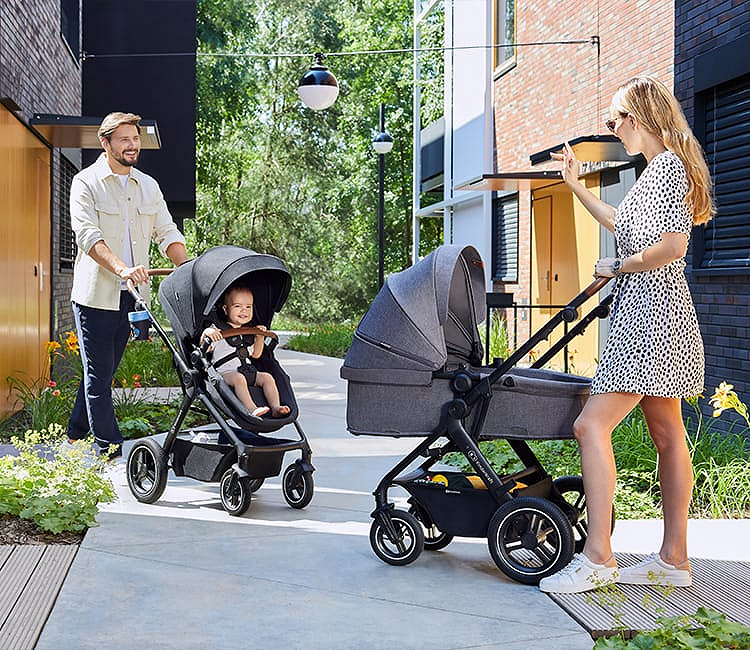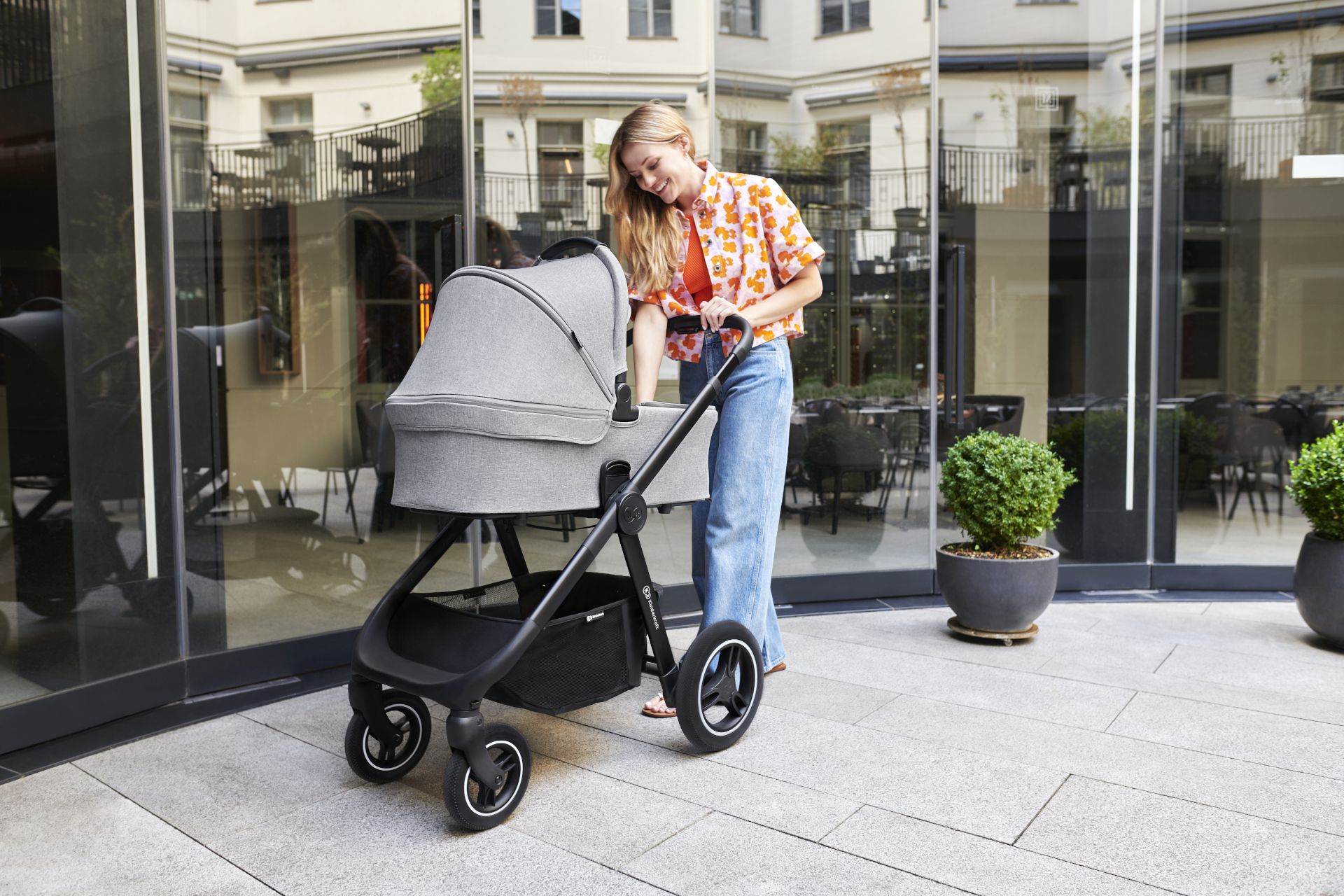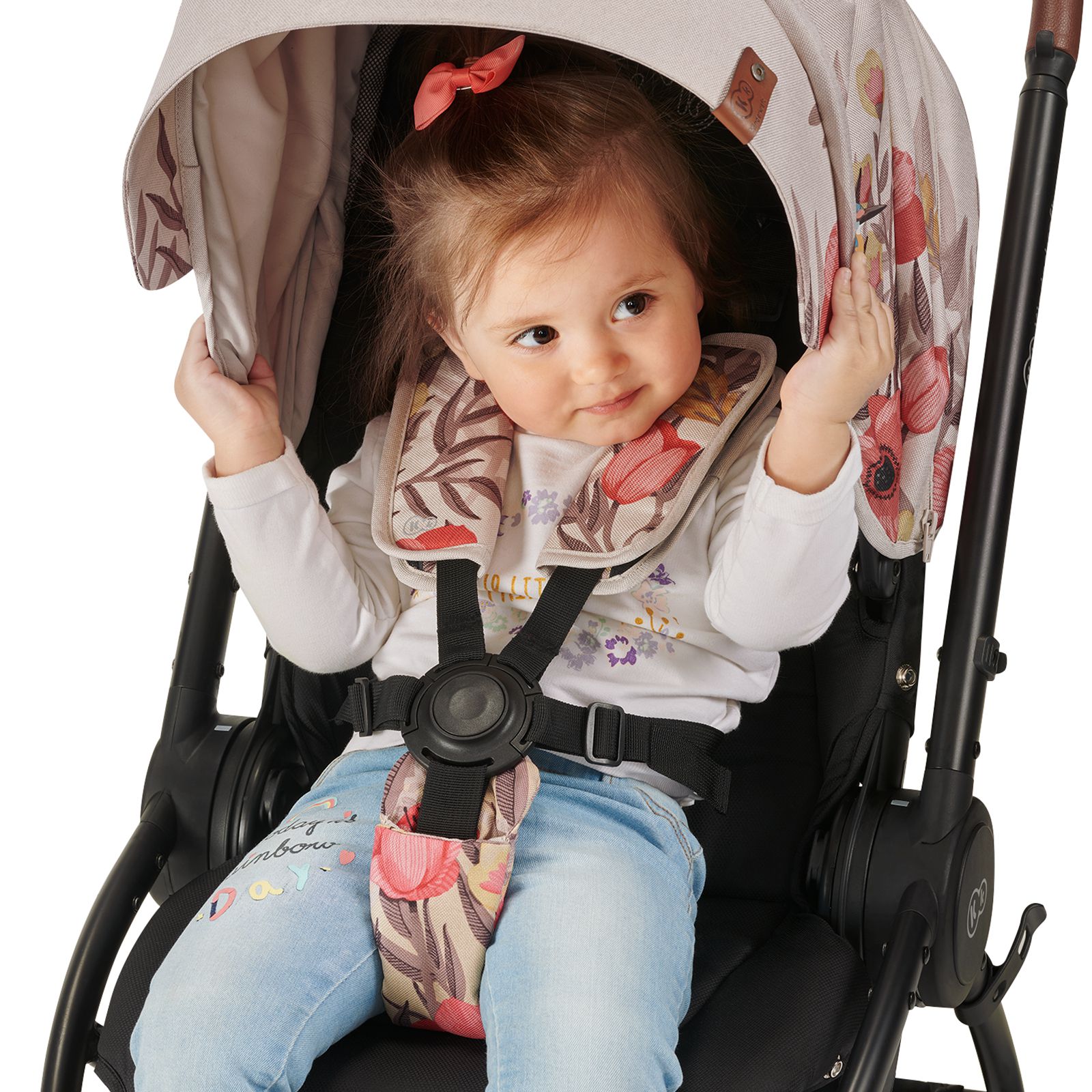Carrycot and stroller – when should you convert your pushchair?

It's happened – you've managed to choose the perfect pushchair. But after a few months, parents start to wonder when to convert the pushchair into a stroller. Is my child still comfortable in the carrycot? And what if they grow out of the classic pushchair but are still unable to sit up unaided? Don't worry – we'll explain what to look for when changing from a carrycot into a stroller, as well as when you can start taking your littlie on rides in a stroller!
Up to what age can a child be in a carrycot?
Manufacturers often write that a child can ride in a carrycot until "approximately six months or until they start to roll over and get up on all fours." This sounds great, but what does it mean for you in practice?
Your baby must remain in a carrycot from birth until three months. This is simply safer – the carrycot, or classic pushchair, has tall side walls to protect your littlie from the wind, rain and sun.

There are many strollers on the market with the option of reclining the backrest to the lie-flat position. Despite this, it's not recommended to use such pushchairs for newborns, unless they have special side protection or a 2-in-1 seat, for example, the XMOOV or VEO pushchairs. However, this doesn't change the fact that the stroller seat forms a carrycot with a rigid base, which is simply the safest option for newborns.
Therefore, it is accepted that the baby can ride in the carrycot until four to six months – until they reach the maximum weight recommended by the manufacturer or until they start sitting up unaided.
When should you convert from a carrycot into a stroller?
A carrycot "until approximately six months"
It's accepted that children start to sit up at approximately six months. However, remember that this is an approximate age – some littlies start sitting up or attempting to sit up much earlier.
It may turn out that you'll be using the carrycot up to six months, because your baby won't be rolling over and will be petite. However, your baby may start rolling over from the back to their tummy at approximately four months. In this case, you must immediately convert the pushchair.
This is due to the child's extraordinary mobility when they finally learn to roll onto their belly. In just a few days, they may get up from their tummy to their knees, and then pull themselves up and fall out of the carrycot!
Carrycot up to 9 kg
Usually, carrycots are designed for babies up to 9 kg in weight. Usually, this is at approximately five or six months. After they reach 9 kg, you should convert the pushchair into a stroller.
WARNING! Some pushchairs have so-called XL carrycots – they're much bigger than classic pushchairs. In addition, like for example in B-TOUR, you can use them for children all the way up to 15 kg!
And your littlie may simply be too tall for a carrycot. Some youngsters grow much quicker than others, and so they stop being able to fit in a carrycot already at approximately four months. And this is when strollers with a backrest that reclines to the lie-flat position come in handy. Such a stroller will not only ensure your child has a flat surface to lie down on, but will also allow you to secure them using a five-point safety harness.
Check:
- whether your child has reached the maximum weight allowed by the manufacturer,
- whether your littlie can freely straighten their arms and legs,
- whether your baby is rolling over and/or attempting to get up onto their knees.
Converting the pushchair – check your child!
Often, youngsters in carrycots start crying suddenly. Parents wonder what's going on – are they rejecting the pushchair, are they hungry, or maybe they don't like going on walks anymore?
This is not the case – if your baby is crying in the carrycot, this is usually because they're already able to sit up/pull themselves up, or are simply annoyed that they can't see their surroundings and parent. Children are quite quick to start looking around, and don't like to have their parents out of their view early on. Try converting from a carrycot into a stroller (if your child is over four or five months old), and observe your baby.

Why is it important to convert from a carrycot into a stroller?
- Safety: a child who's able to pull themselves up or sit up can fall out of the carrycot. Strollers are also equipped with a safety harness to keep boisterous littlies in check.
- Comfort: a carrycot that's too small may cause discomfort on walks, and result in your child being irritated and crying.
- Curiosity: your littlie will have you in their sight while being able to see what's going on around them on walks. This aids in their development.
Which pushchair is suitable for a six-month-old?
Already at the stage of buying a classic pushchair, think about whether it's better to buy a 2-in-1 or 3-in-1 product. Choosing this type of solution will save you time and money. But check to make sure that:
- the backrest reclines flat or to the lie-flat position,
- the stroller has an adjustable footrest and safety harness with pads,
- it's equipped with a large, fold-out hood that can be extended.
- it has accessories, such as a leg warmer and rain cover.
